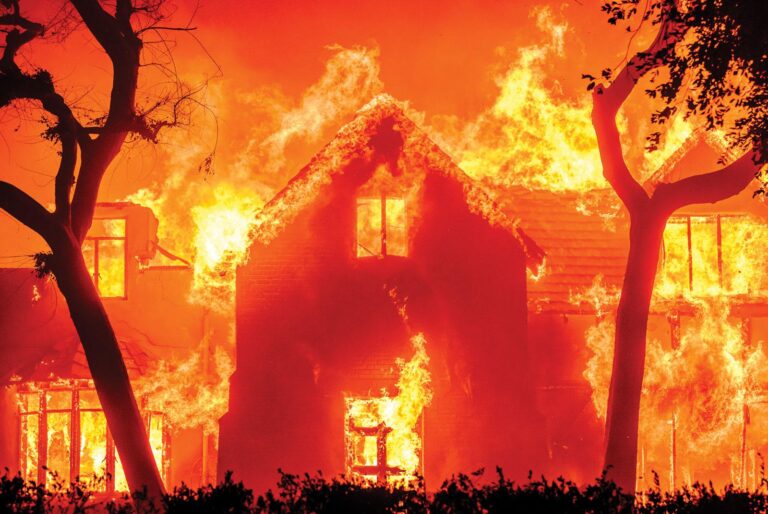How Los Angeles Wildfires Are Reshaping the U.S.Housing Market Landscape
Wildfires Expose Fragilities in America’s Housing Sector
The recent surge of wildfires devastating parts of Los Angeles has brought renewed attention to the fragile state of the U.S. housing market, which has long been characterized by inflated prices and intense demand. As entire communities are displaced and properties destroyed, the true risks embedded in high-value real estate—especially in fire-prone regions—are becoming unachievable to ignore. These catastrophic events have forced a reevaluation of property valuations, revealing that many home prices fail to reflect the growing environmental threats and structural vulnerabilities that jeopardize long-term investment stability.
Several critical factors are driving this market instability:
- Escalating insurance premiums and widespread policy cancellations in wildfire-sensitive areas
- Heightened enforcement of fire-resistant building standards and construction regulations
- Investor reluctance fueled by increasing climate-related financial uncertainties
| Aspect | Before Wildfires | After Wildfires |
|---|---|---|
| Property Values | Rapidly appreciating | Declining in high-risk neighborhoods |
| Insurance Market | Accessible and affordable | Limited availability with soaring costs |
| Investor Confidence | Robust | Markedly cautious |
Wildfire Impact on Home Prices and Buyer Behavior
The destruction wrought by California’s wildfires, especially in Los Angeles, has triggered a significant downward adjustment in property prices, especially for homes directly affected or located in vulnerable zones. The financial burden of repairs combined with skyrocketing insurance premiums has diminished the attractiveness of these properties. Moreover, potential buyers are increasingly factoring in the heightened risk of future fires, leading to longer market times and a cooling of demand in previously hot real estate segments.
Key elements influencing current market valuations include:
- Sharp increases in insurance costs reducing buyer interest
- More rigorous evaluation of fire prevention features during appraisals
- Extended listing periods as buyers adopt a wait-and-see approach
- Price corrections that better reflect rebuilding expenses and resilience investments
| Housing Category | Average Price Before Fires | Average Price After Fires | Percentage Decline |
|---|---|---|---|
| Detached Single-Family Homes | $870,000 | $715,000 | 17.8% |
| Condos and Townhouses | $610,000 | $530,000 | 13.1% |
| High-End Luxury Estates | $2,250,000 | $1,860,000 | 17.3% |
Adapting Real Estate Investment Strategies to Climate Realities
With climate change intensifying the frequency and severity of natural disasters, conventional real estate valuation models are becoming obsolete. The Los Angeles wildfires have underscored the necessity for investors and homebuyers to incorporate environmental risk factors into their decision-making processes.Beyond location and amenities, considerations such as disaster exposure, insurance feasibility, and resilience measures are now pivotal in assessing property worth and investment viability.
Emerging priorities reshaping investment approaches include:
- Insurance dynamics: Increasing premiums and coverage restrictions in vulnerable areas
- Regulatory evolution: Adoption of stricter building codes and land-use policies to mitigate fire risks
- Market fluctuations: Greater volatility driven by unpredictable climate events
- Long-term sustainability: Evaluating infrastructure durability and community resilience initiatives
| Investment Factor | Pre-Wildfire Scenario | Post-Wildfire Reality |
|---|---|---|
| Home Price Trends | Consistent growth | Plateauing or declining in affected regions |
| Insurance Accessibility | Widespread and cost-effective | Restricted with premium hikes |
| Investor Sentiment | Strong interest in premium properties | Heightened caution and demand for risk transparency |
Policy Initiatives for Building Resilient and Lasting Housing
Considering the vulnerabilities exposed by the Los Angeles wildfires, policymakers must champion reforms that integrate climate risk into housing growth and urban planning.This includes enforcing zoning laws that limit construction in high-fire-risk areas while promoting safer locations for new housing projects. Strengthening building codes to mandate fire-resistant materials and home hardening techniques is essential to reduce future losses. Additionally, landscaping regulations encouraging defensible space around homes can substantially mitigate fire spread.
Investing in resilient infrastructure and enhancing community preparedness are equally critical. Thorough emergency response frameworks combined with public education campaigns can improve evacuation outcomes and recovery efforts. Below is a summary of recommended policy actions for fostering resilient housing ecosystems:
| Policy Action | Immediate Benefits | Long-Term Outcomes |
|---|---|---|
| Fire-Resistant Construction Standards | Minimized property damage | Lower insurance premiums and enhanced occupant safety |
| Zoning Restrictions in High-Risk Zones | Reduced exposure to wildfire hazards | More sustainable urban expansion |
| Community Preparedness and Education | Improved evacuation efficiency | Stronger, informed communities |
- Incentivizing developers to adopt eco-pleasant and fire-resilient building materials
- Mandatory disclosure of wildfire risks during property sales to enhance buyer awareness
- Incorporation of wildfire risk mapping into municipal planning and housing assistance programs
Looking Ahead: Integrating Climate Awareness into Housing Markets
The ongoing wildfire crises in Los Angeles serve as a powerful catalyst for rethinking how the U.S.housing market values and manages risk. These disasters reveal a critical gap between current property prices and the environmental realities threatening their stability. To foster a more equitable and sustainable housing market, it is imperative that risk assessments become obvious and that urban planning prioritizes resilience. For homeowners, investors, and policymakers alike, acknowledging and adapting to climate risks is no longer optional but essential for securing the future of American communities.




